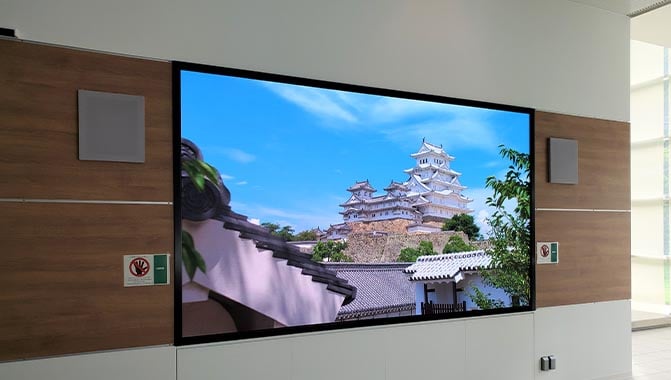Novel Strategies to Enhancing Mobile Connectivity Systems for Luminescent Panel Surfaces.
Wiki Article
Wireless connectivity solutions for LED wall screens have transformed the way we utilize visual interfaces in various settings, such as live events, corporate gatherings, and promotional displays. These panels, known for their high-impact colors and high clarity, rely heavily on strong wireless connections to function optimally. As technology continues to evolve, cutting-edge strategies are being engineered to optimize these wireless solutions. This article will explore some of the latest techniques aimed at improving wireless connectivity for LED wall panels.

One notable approach to improving wireless connectivity is the use of next-generation antenna systems. Antennas play a critical role in transmitting and capturing signals between devices. By employing adaptive antenna arrays, which can adapt their direction and beamforming pattern based on the surroundings, manufacturers can greatly improve signal integrity and stability. This adaptability helps minimize interference from other electronic systems and obstacles, leading to sharper video output and more consistent link performance for Light Emitting Diode wall panels.
Another innovative approach entails implementing mesh networking systems. Unlike conventional wireless setups that depend on a single access point, mesh systems consist of multiple nodes that work together to spread the internet signal over a larger area. This setup ensures that Light Emitting Diode wall panels receive a consistent signal no matter their location. In venues like arenas or large exhibition halls, where physical obstructions may interfere with signals, mesh networks provide a more reliable solution by ensuring signal integrity even in crowded environments.
Moreover, incorporating edge processing into wireless communication systems can enhance efficiency for LED wall panels. Edge computing enables data handling to occur near the source of data origination rather than depending entirely on centralized data centers. By analyzing data near the Luminescent Diode wall panels, the architecture minimizes latency, resulting in quicker response times and more fluid video playback. This innovation is especially advantageous for use cases that demand real-time responses or interactive functions, making presentations more immersive for audiences.
Finally, adopting new communication protocols can also improve wireless connectivity for Light Emitting Diode wall screens. Protocols such as 802.11ax and fifth-generation wireless offer greater browse around this web-site bandwidth and faster data transfer rates compared to previous standards. These advancements enable multiple units to connect concurrently without compromising performance. As Luminescent Diode wall displays are often used in conjunction with other smart technologies, implementing these modern protocols guarantees that all systems can interact seamlessly, leading to an significantly improved user interaction.
To summarize, the advancement of wireless communication solutions for LED wall panels is crucial as technology continues to advance. Through developments such as intelligent antennas, mesh networking architectures, edge computing implementation, and new communication protocols, manufacturers can provide better performance and reliability. These approaches not only enhance the find out here now capabilities of Luminescent Diode wall units but also enhance the visual experiences they deliver across various applications. As these technologies continue to progress, viewers can anticipate even more cutting-edge visual presentations in the coming years.